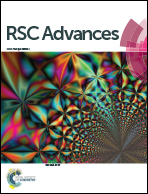A novel cementitious microfiltration membrane: mechanisms of pore formation and properties for water permeation†
Abstract
This study involved the fabrication of a novel low-cost microfiltration membrane using quartz and cement. The entire fabrication process was conducted at room temperature, rather than utilizing high-temperature sintering, as is generally done during the fabrication of traditional inorganic membranes. The mean pore size of the membrane ranged from 0.4 to 2.4 μm depending on the quartz-to-cement ratio (q/c) used. Two types of pores (I and II) were formed in the membrane. The formation of type I pores was mainly attributed to the stacking of cement particles. The formation of type II pores, which were less prevalent than type I pores, was attributed to the division of bigger pores by the thin needle-like ettringite. The sizes of the type I and type II pores varied significantly, depending on the used q/c. Moreover, investigation of the membrane properties showed that as the q/c used increased, increases were obtained for both the membrane porosity (from 18.4% to 31.4%) and water flux (from 0.16 to 13.26 m3 m−2 h−1 bar−1), whereas the bending strength decreased (from 9.75 to 3.54 MPa). Additionally, element dissolution experiments demonstrated that the membrane was suitable for use for water treatment.


 Please wait while we load your content...
Please wait while we load your content...